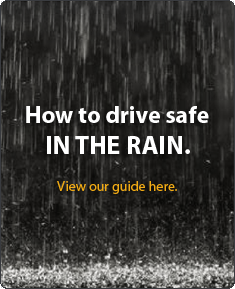News
Electric cars in India: Range anxiety vs highway anxiety
Most EV owners are based in metros & big cities where the charging infrastructure is quite adequate. Shouldn't we worry about the number of chargers on the highways?
BHPian Early_Adopter recently shared this with other enthusiasts.
In the recent past, one of the hot topics that is being discussed in informal chat groups is all about how many kilometres one can drive on a single charge of an EV. The new owners, mostly city-dwellers, are anxiously discussing if their car is giving 220 km range on a single charge or should it be 230 km? Was the AC on or was it was only the blower? How many watt-hours did the HID or LED lamps consume? Will my car give 20 km more range if I drive at 50-60 km/h rather than 80 km/h?
IMHO, while some of us successfully transitioned from ICE vehicles to owning the new age EVs, our mindsets remained in the ICE age - pun intended.
Currently, most EV owners are based in metros and large cities where the charging infrastructure (both public and private) is quite adequate. Given the current electricity tariff for charging the cars, one incurs anywhere between Re. 1 to Rs. 2 per kilometre, compared to Rs. 7 to Rs 10 per kilometre on ICE cars. That means, some variations in the ranges within the city limits do not pinch the pocket for EV owners when compared to the ICE car owners.
So, I wonder if the Range Anxiety is for real, especially in city driving conditions?
Instead, shouldn't we worry about the number of chargers along the highways? Shouldn't we worry more about if these chargers are in working condition? Shouldn't we worry about how fast we can charge our cars along the highways?
In summary, shouldn't the narrative shift from Range Anxiety to Highway Charging Anxiety?
IMHO, a subtle shift in the narrative will go a long way in shaping the way the whole ecosystem develops which is at a nascent stage right now.
Wrote this post to hear diverse views from this very august group of auto enthusiasts.
Cheers
Here's what GTO had to say about the matter:
An excellent thread.
The term "Range Anxiety" was coined when the (lame) EVs on offer had tiny driving ranges. Think Nissan Leaf abroad with serious range issues in the cold, or the Revas in India. Unfortunately, "range anxiety" has stuck itself in our minds and just like Indians are generally obsessed with "fuel economy" in ICE cars, so will range be an obsession for years to come.
Today's EVs offer very healthy driving ranges of 200 - 350 km on a full charge. This is more than enough for anyone in the city. Heck, my modified Civic used to do merely 300 odd km on a full tank of petrol. And the OEMs are continuously pushing the envelope. The day is not too far when we will see 500, 600 & 800 km EVs on sale. Eventually, I see mainstream EVs being offered with multiple battery options, and only highway runners will pay extra for the 750 km battery. Urban folk will stick to their cheaper <500 km units.
Range Anxiety in the city is overrated and no longer relevant, not even with a Tiago EV and its 200 km range. If anything, it shows poor planning of how you charge your cars. On the other hand, range anxiety on Indian highways is a very real thing, primarily because:
Almost zero charging facilities on Indian highways.
If you drive fast, the range drops like crazy. 80 - 90 kmph is better for an EV's range than 120 kmph. That's why I rarely ever see EVs in the right / fast lane of the expressway.
Complete breakdown on zero charge and you can't really fill up quickly like in a petrol / diesel car. You'll need professional help.
I totally agree with the premise of this thread. "Highway Anxiety" is perhaps a more relevant term today.
Here's what BHPian Kannan had to say about the matter:
In most cases, the range anxiety might be for highway driving. At least mine is that.
But I have had situations where I would have just one point of fuel left in my car, and all of a sudden I have to drive some 60KMs due to unplanned situations. These are the times when we get anxious. For me, it's as simple as going to the fuel pump, getting the car topped up and then driving away. Whereas EV owners have to spend some considerable time charging the car and this gets complicated especially when they are apartment dwellers where there may not have chargers available. We are humans after all and we generally have the tendency to not be prepared all the time.
My mild OCD always makes sure I top up when the level hits 3 points in the fuel level indicator, whereas I have friends who will not fill up until unless there is only one point left and then there are few who will fill only when the fuel level indicator starts to blink!. When they switch to EVs, they will require some change in the habit, else they surely will put themselves in anxiety.
Also, batteries have a limited cycle and the problem will start to creep in at the later stage of an EV's lifetime.
Here's what BHPian Kosfactor had to say about the matter:
Charging infrastructure can be implemented rapidly. Range can be doubled or tripled based on battery capacity overnight - Cost is the real problem.
Right now only the save polar bear customer is ready to pay more for an EV that is less useful than the equivalent ICE car, when the cost becomes equal to the ICE vehicle one can expect other concerns to become less relevant.
Here's what BHPian gkveda had to say about the matter:
Yes, highway anxiety and range anxiety exist and it's a reality for EVs. Although infrastructure availability to charge on highways, accurate figures of range in real-time driving scenarios and time taken to charge the drained battery are the root causes for the anxiety, I personally think this anxiety can greatly be reduced by a slight change in the design of EV cars.
There can be a standby battery fixed in the car with a lower range (maybe 50 kms) which will basically serve as the reserve function in two-wheelers.
Some key points about the stand by battery would include:
- It will not be utilised by the car when the main battery has the ability to move the car.
- When the main battery is completely drained and not able to drive the movement, a small switch should be able to draw current from standby.
- While charging, the standby battery will be automatically charged along with the main battery.
- When the standby battery is being used, the speed limit should be there for maximum range and other loading accessories would not function.
- Standby battery is easily replaceable (similar to an ICE car battery).
Check out BHPian comments for more insights and information.


















